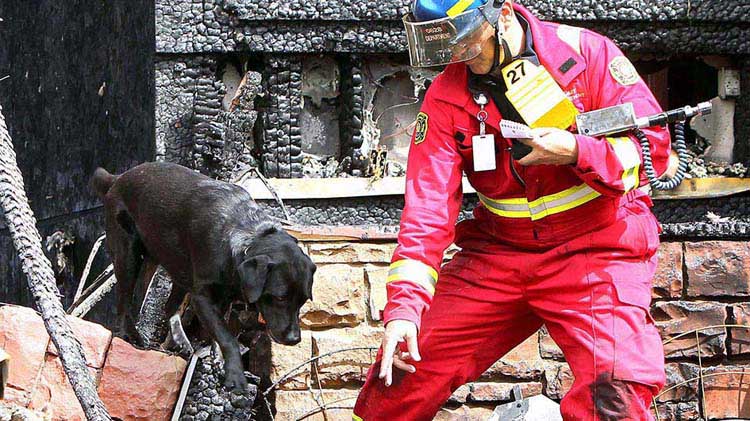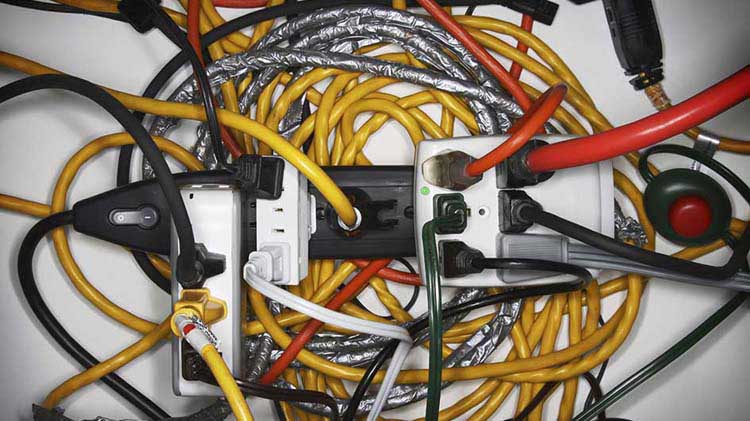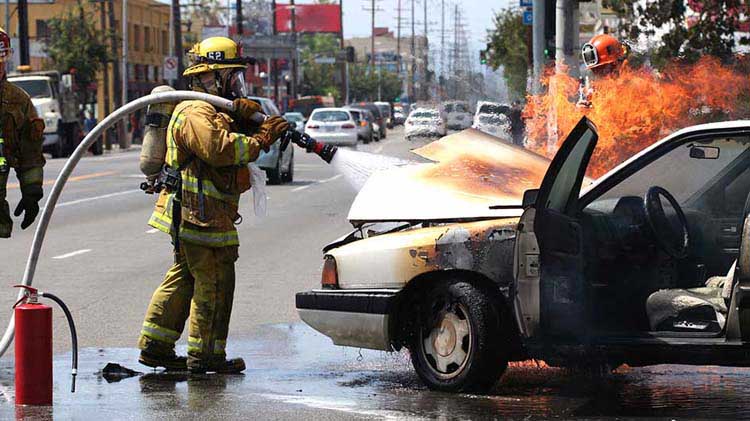Arson dogs help sniff out the facts about suspicious fires
Since its inception, the State Farm® Arson Dog Program has put more than 435 dogs and their partners to work in 46 states, the District of Columbia and three Canadian provinces.
Meet Sowell. Along with his human partner, Captain Craig Matthews, this canine investigator helps investigate fires for the Howard County Department of Fire Rescue Services in Baltimore, MD. His job: help find evidence of arson following a fire.
It's important work. According to the National Fire Protection Association, there are an estimated 261,000 fires intentionally set in U.S. residential buildings each year, resulting in an estimated 440 deaths, 1,300 injuries and $1 billion in direct property damage.
That's where teams like Matthews and his arson dog Sowell, graduates of the State Farm Arson Dog Program, come in. Sowell is specially equipped to sniff out ignitable liquids that may have been used to intentionally set a fire and lead Matthews right to them.
Between investigating arson on the job and time at home being a regular dog, Sowell plays an important role in all parts of Matthews' life. Watch as Matthews explains how he and Sowell were trained.
The State Farm Arson Dog Program
Since 1993, the State Farm Arson Dog Program has provided funding for the acquisition and training of more than 435 teams across the United States and Canada. Each year billions of dollars in property and hundreds of lives are lost as a result of intentionally set fires. Accelerant detection canines — known as arson dogs — are trained to sniff out minute traces of accelerants (gasoline, lighter fluid, etc.) that may have been used to start a fire. They live and ultimately retire in the homes of their human handlers, who are either law enforcement or firefighting professionals.
All of the dogs chosen for the State Farm Arson Dog Program are Labrador retrievers or Lab mixes that are acquired through a cooperative program with guide dog and disability assistance canine organizations (as well as through local animal shelters and humane societies). As a result of their high energy and social exuberance, these dogs are career-changed from disability assistance service to crime fighting.
How arson dogs do their work
Accelerant detection canines (ADCs) work help to either confirm arson or eliminate the possibility, allowing insurance claim processes to move forward. Canines possess capabilities humans cannot duplicate or often even comprehend. Your average dog's nose is tens of thousands of times more sensitive to odors than a human nose. Dogs can detect some odors in parts per trillion and possess up to 300 million olfactory receptors in their noses (compared to about six million in humans). The part of a dog's brain that is devoted to analyzing smells is, proportionally speaking, 40 times greater than ours.
Dogs in the State Farm Arson Dog Program are trained using Pavlovian techniques. A primary positive response by the canine in the presence of an ignitable liquid is indicated when the canine assumes a "sit" position. This is called a "passive alert." The benefit to this type of training is the canine sits and indicates with his/her nose the exact location of the flammable liquid, thus leaving the evidence undisturbed. This aids in evidence collection integrity. Once the dog alerts to the presence of an ignitable liquid by sitting and indicating with his nose, the response is reinforced by food reward and lots of praise. Food reward training also means the dog only eats when working a fire scene or completing training drills multiple times a day, every day. They only eat from the hand of their handler, never from a bowl.
The canine alert does not prove or disprove that ignitable liquids were used in the commission of a crime, arson or unlawful burning. Samples must be collected by a qualified evidence technician and confirmed by the crime laboratory to determine if the samples contain ignitable liquids. Fire/arson investigators, canine handlers and chemists must work in concert to corroborate each other in order to establish that a crime has been committed. The dog is a tool to locate evidence efficiently and effectively, but it is ultimately up to the arson investigator to gather information before presenting findings to a prosecutor.




